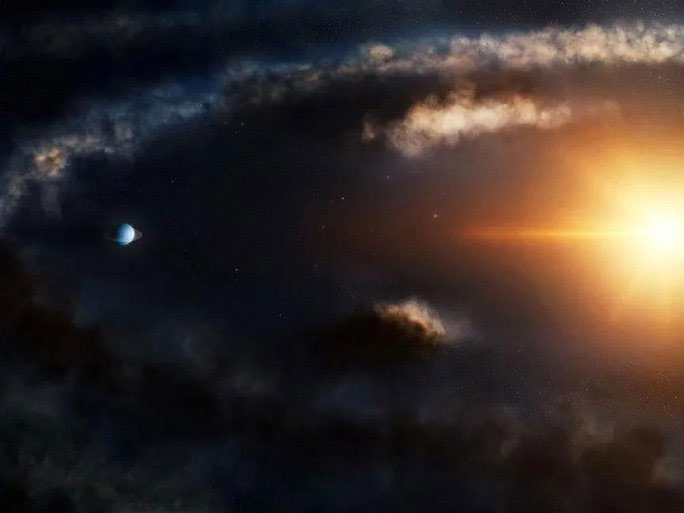A world in the mirror is a nearly perfect replica of the familiar planet we see in the sky, orbiting another nearly perfect replica of the Sun, which is in the process of formation.
According to Sci-Tech Daily, a unique technique has been developed by astronomers at the Harvard-Smithsonian Center for Astrophysics (CfA) to search for young planets hidden within protoplanetary disks.
Such a world has been discovered in the protoplanetary disk of star LkCa 15 in the Taurus constellation.

Graphic depicting “world in the mirror” featuring a Sun-like star and a Saturn-like planet – (Image: Harvard & Smithsonian Center for Astrophysics).
LkCa 15 has a mass of about 97% that of the Sun and shares similar characteristics, being slightly cooler than the Sun. A “newborn” planet—approximately 1-3 million years old, just a blink in the lifespan of a celestial body—has recently emerged from the protoplanetary disk.
According to Dr. Feng Long, the lead author of the study, the direct detection of young planets is very rare because they are too faint and obscured by the dense gas and dust of protoplanetary disks.
This young planet could become a gas giant similar to Saturn, with comparable size. There is a smaller chance that it resembles Uranus.
Thanks to the superior ALMA astronomical observation system located in the desert of Chile, scientists have detected up to two faint points in the protoplanetary disk of the star, located quite close together, with at least one of them being a planet. It is likely that this protoplanetary disk also contains smaller planets like Earth, but clearly finding them in a distant world 518 light-years away is not easy.
Scientists believe that the results suggest a new method for planet searching, as we can “catch” distant worlds, which is even more valuable when it is a “world in the mirror” like this, offering clues about the origins of our Solar System.
The study has just been published in The Astrophysical Journal Letters.


















































